Under the hood of OBs Part 2: Exploring the future of the supertruck and changing OB culture
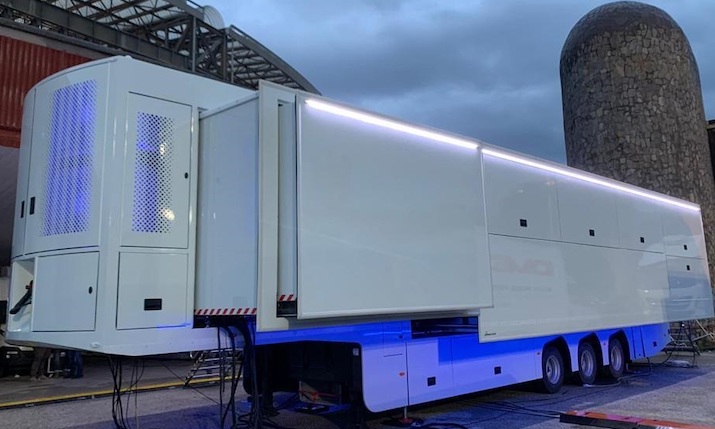
NVP’s new truck for 2021, OB7, features machine learning and artificial intelligence tools
Supertrucks used to be all the rage in sports broadcasting, but are they still today? Although we are still seeing the launch of brand new large, cutting edge outside broadcasting (OB) trucks to enable live sports coverage, we are also seeing a rise in demand for smaller vans that are being used to facilitate remote broadcasts.
Here we talk to a panel of experts from the OB industry in part two of our series exploring the future for uber OBs and where this industry is going moving forwards.
Modular trend setters
Prior to the pandemic, new supertrucks were big news. Although several large vans have been launched over 2020 and into 2021, Christer Pålsson, president of NEP Central and Southern Europe, says modular systems are setting the trend today.
“Outside of the deliverables for specific contracts, we don’t have any current plans to build more of the really big supertrucks in the next year or two. When it comes to speculative builds, we’ve seen a shift in demand and our solutions need to be more modular.
“With technologies evolving so rapidly at the moment, the typical depreciation cycle of core technology is decreasing, meaning we need to amortise our costs over a shorter period of time,” notes Pålsson.
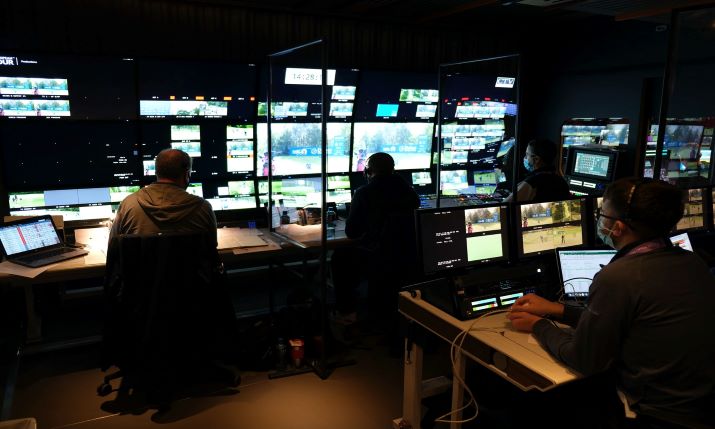
Crew inside CTV OB’s OB12A hard at work for European Tour Productions in October 2020
“The best way we can do this is through increased utilisation,” he states. “By having a modular approach, and ensuring our facilities are all cross compatible, we can combine a number of medium size units to create the ‘super size’ fire power, when required, but we can then split them back out and have them working harder on a week to week basis.”
Arena Television’s deputy director of operations, Daf Rees, has noted the same trend towards modular set ups for OBs: “The days of supertrucks aren’t numbered quite yet, but I think there’ll be a shift toward a different configuration of units.”
He continues: “Our goal is to send fewer trucks to site as that has the greatest impact on sustainability, so I think we’ll see more versatile trucks that can carry cable and equipment, as well as serve as the technical hub of the on-site operation. Our trucks will always be super!”
“I believe that the OB on site will be always a good part of this job. If everything goes remote… I think this work is dead”
Peter Bates, EMG UK managing director, agrees: “Supertrucks will always have a place in delivering major OB productions, however new builds will reduce to allow smaller, but still powerful units to deliver the increased requirement for remote productions.
“We launched OB12A and its sister unit OB12B last summer,” continues Bates. “This is a scalable setup with its datacentre located at the front of the tender connected by four fibre cables, enabling maximum operational capacity for personnel within the production units.”
Neville Hooper, NEP UK’s deputy head of sound, says that while we will see less uber trucks being built in the immediate future, they still have a place: “It is unlikely that any new large trucks will be built in the short to medium term. Focus has shifted to advancing remote style delivery, which often does not require such a large vehicle. But there are still those jobs which, for a variety of reasons, are not able to be delivered remotely. Jobs such as state events, due to their size and complexity, still require large trucks, along with certain major sporting and entertainment events.”
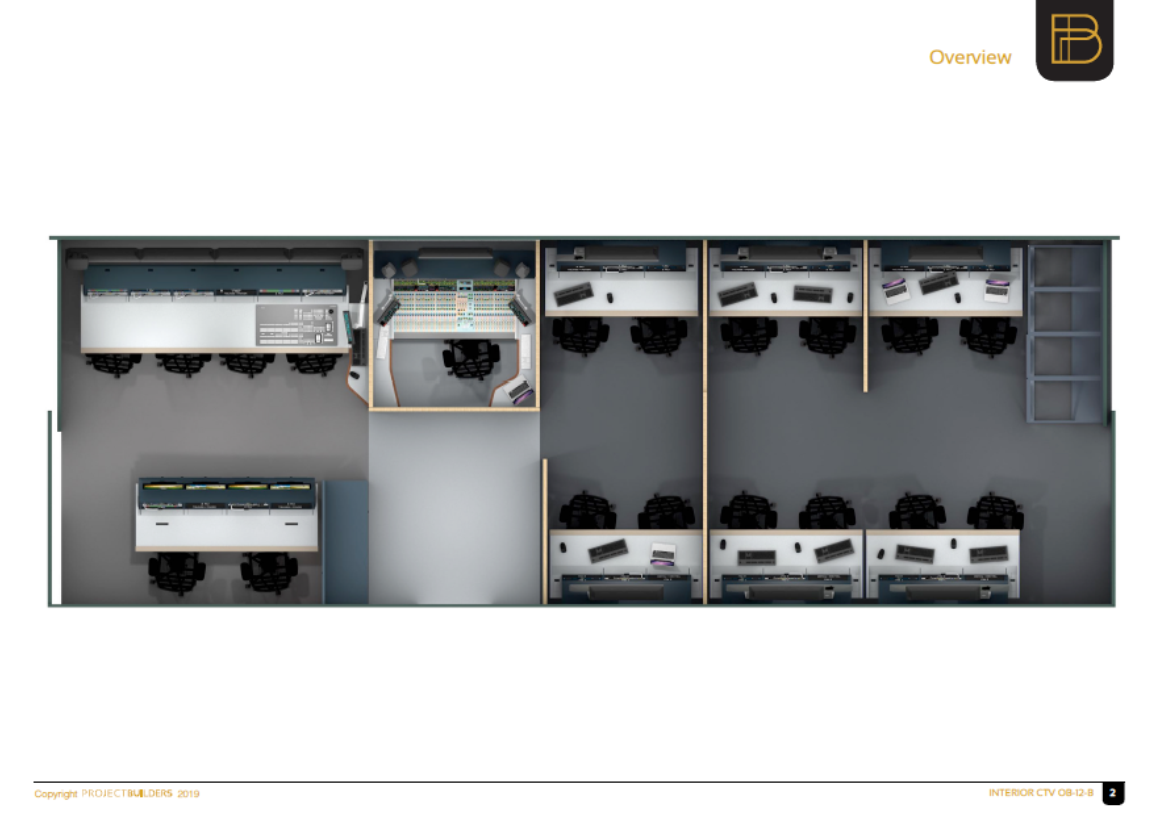
CTV OB launched its large truck OB12A’s little sister, OB12B [pictured], in late 2020. It is fitted with diPloy and works alongside OB12A to create a powerhouse in the TV compound
Meanwhile, Andrea Buonomo, Cinevideo’s executive sales manager, says that OB truck providers have spent recent years preparing for demand for the latest technologies, so the lull in large truck builds now is simply part of the natural cycle. He explains: “I think that OB companies [have already] moved in time for the next future request about 4K, so this is why [over] the last three years we have seen a lot of new OB’s [being built]. Actually in Italy we have 10 or 12 UHD trucks [at Cinevideo] but [there is] no request for UHD (or very poor demand). Maybe in the future [this demand] will increase.”
Big love for big trucks
As to where the big trucks are needed in sports broadcasting today, and where we will see this changing as we move ahead, Pålsson comments: “For the big premium broadcasts the demand for big trucks will remain, and for a variety of reasons. A lot of clients want to be on site and have their preferred crew alongside them. Often it will be linked to the spec of the production where there is a lot of additional kit, high SLA’s, or other pressures; some clients feel more comfortable in known surroundings and the technical fire power of the big truck makes sense. Sometimes it’s a straightforward financial decision, where often it just doesn’t it doesn’t make commercial sense to remote everyone. For this reason we believe we will continue to see big trucks on the roads for many years to come.”
However, Pålsson adds: “Where we have seen a transition is on some of the big ‘once every four years’ type of productions, who are now looking more closely and remote and centralised workflow solutions. For the high volume work, this is where we have seen the biggest shift in demand across Europe. Many clients now actively request comparative remote solutions at the RFP stage, and once engaged more and more are shifting towards centralised solutions due to all the known benefits it can offer (agile scale, efficiency, reliability, environmentally friendly). This also offers the agility to ability to onboard additional content production tools, that previously may have been technically or financially prohibitive.”
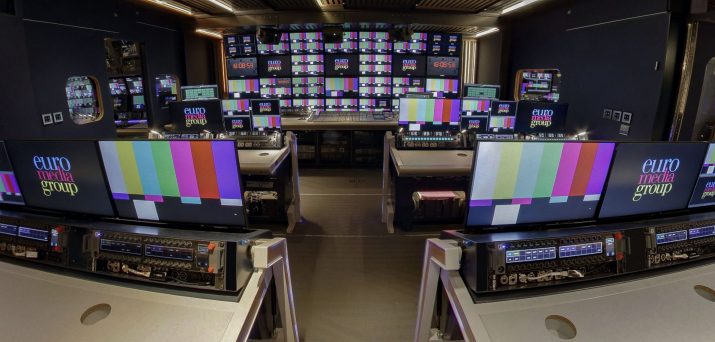
The production area in Nova 103, one of EMG’s twin UHD HDR trucks, Nova 103 and Nova 104, launched last summer
Buonomo notes: “Big trucks are needed in sports broadcasting due to a large quantity of people on site. For example a normal Serie A game involves a crew of up to 35 people (cameramen, EVS, shading, etc,) which means we need to accommodate inside the OB a large number of technicians (three shading, five EVS. one engineering manager, one audio manager, one video mixer technician, plus the people from the client like director, producer, assistant director and so on.) It is also true that the space is never enough, because on a big event the truck will be a meeting place point with clients, producers, and technicians.
“Last but not least, there is a lot of technologies inside an OB for doing these kind of productions,” continues Buonomo. “Also for coverage of an event with 10 to 12 cameras it is necessary [to have a] support truck that needs to move a lot of equipment.”
Supertrucks are still a vital part of the OB arsenal, Bates notes: “Supertrucks with their flexibility, firepower and space will still be required at major sporting events such as finals, ceremonies and major special events. These will still be the tool of choice for single event day productions and are able to deploy and deliver full production facilities or remote surface productions with short lead times from event to event, irrespective of the location’s connectivity capabilities.”
Adds Rees: “Big trucks are still needed where either connectivity isn’t available, or the event itself is of such importance that there is still a strong desire to be on site. What changes, I think, is the number of big trucks on site as one truck might service both on-site and remote production demands, and there may be fewer visiting broadcasters using on-site facilities.”
Remote future or decay?
As to whether our experts believe that the trend towards remote working is here to stay, Regan says: “Since the start of the pandemic, most Timeline TV sporting OBs have made use of some form of remote production. This includes everything from remote graphics operators, to full multi-camera coverage, with only a handful of people onsite. There has been a very quick uptake with these remote technology and Timeline believes these changes are here to stay.”
“We can build and deploy lightweight production gallery facilities built for monitoring and control, but we can have all the dedicated hardware located centrally, which on any given day could be working different productions, different clients and even different countries!”
Regan says remote productions are the future. “With all companies pushing to get to net zero carbon emissions, reducing travel is a key. OBs going forward will be a mix of onsite and remote production, with all roles evaluated to see which can be done remotely to ensure the least amount of travel for both crew and equipment.”
Rees agrees: “Yes, it is [here to stay]. Whether you’re thinking of remote or decentralised workflows, or smaller units operated by multi-skilled operators, there are technical, commercial and work-life benefits to be found in ‘the new way of working’. That’s not to say those benefits are to be found in every production; some will continue to operate in a ‘traditional’ manner as that will be the best fit for that production, but the new way provides us with a great set of tools in the box to leverage benefits and efficiencies in places where they fit.”
However, Buonomo believes remote working has the potential to kill the OB industry. He states: “I think that something will change in the future, but not so early. I believe that the OB on site will be always a good part of this job. If everything goes remote… I think this work is dead.
“It is necessary to safeguard the human side of this work, because we can have all the artificial intelligence we want, but only a human can put passion into what he does (and he needs to be on the field to feel the [emotion of the] game.”
Buonomo adds: “I’m not very convinced about [remote working being here to stay, especially] in a small country where you can reach all locations in short while.”
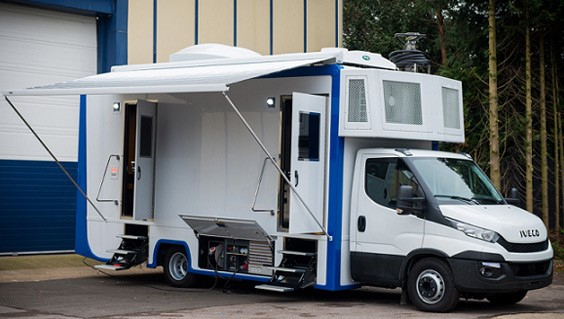
Suhail, Gravity Media’s new small Qatari-based OB van
Changing OB culture
However, despite some scepticism about remote working, the majority of our experts are excited about where the OB industry is right now.
Bates says the last 12 months have pushed technology and ways of working for all, including OB providers, forwards. “This period has driven innovation across the industry,” he notes. “The move to remote and decentralised productions has allowed for production flexibility without compromise to the screen output. There are now so many options that can be used across delivery; no OB is the same and that is exciting!
“The OB culture is changing, and for the next generation of production and engineering talent this will be their normal,” Bates states.
Rees is also enthused about the state of the industry right now. He explains: “It’s an exciting time! The most noticeable change will be the appearance of remote operation hubs, like our CoreTX production facility based in Redhill or our portable CoreTX facility that can be built at a location convenient to the client. The technology within these production centres will utilise on-premise, cloud, remote production location and data centre co-location physical and virtual processing to create the most flexible production workflows we’ve ever been able to offer.
“Our fantastic fleet of OB trucks will continue to be a major part of what we do, and the new technologies and concepts augment our existing services to open up many new ways of working for the benefit of our production partners,” says Rees.
He goes on: “There’s a really interesting mesh of factors going on, between new technology, better connectivity, travel limitations, sustainability goals, better work-life balance and commercial pressures to name a few that’s driving this generational change to question the way we cover events. It’s a self-reflection that’s overdue and I’m convinced will lead to a much more diverse and sustainable industry.”
Hooper notes: “Moving forwards, the next steps will be more contracts delivered in various styles of remote and centralised models, and as contracts are renewed, it is likely their mode of delivery will be revisited. As technology and connectivity improves, there will be more options available. As already suggested, while things have changed, it’s more of a diversification than a complete change of direction, and ‘traditional’ OBs are not yet a thing of the past!”
Finally, Pålsson says: “The future for NEP is to remain flexible. Our clients come in all sorts of different shapes and sizes so our solutions need to match. We believe in a modular and likely often hybrid approach, where both on location, remote and centralised workflows will need to co-exist and be interoperable. And while trucks are firmly here to stay, that’s not to say they aren’t going to look different as time goes on.”
Concludes Pålsson: “There will always be a request from some clients to be on site, to be closer to the action. But that doesn’t necessarily mean we need to have all the equipment on site. Advances in virtualisation, growing network capacity and emerging technologies means we can now remote more equipment off site to centralised and even cloud facilities. We can build and deploy lightweight production gallery facilities built for monitoring and control, but we can have all the dedicated hardware located centrally, which on any given day could be working different productions, different clients and even different countries!”
 For more on the future of sports outside broadcasts, register for Remote Production Unleashed 2021, sponsored by LiveU, which takes place on Thursday 27 May from 2pm UK time. Full details at: https://www.svgeurope.org/remote-production-2021
For more on the future of sports outside broadcasts, register for Remote Production Unleashed 2021, sponsored by LiveU, which takes place on Thursday 27 May from 2pm UK time. Full details at: https://www.svgeurope.org/remote-production-2021

